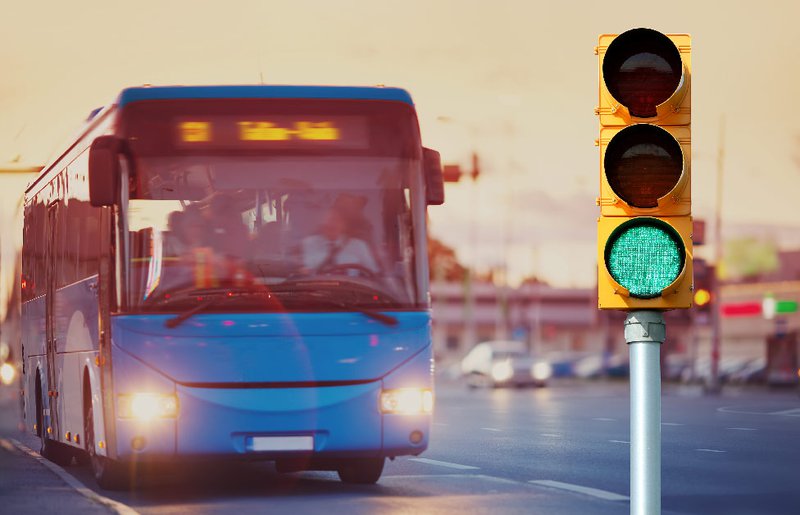
Public transportation could unlock anywhere from $1.5 million to $1.8 billion per year in value depending on the size of the city, according to a study by Rutgers University.
These benefits come from many different places. Riders that don’t need to purchase a second vehicle can save nearly $10,000 per year. Commutes tend to be shorter in many major cities, and public transit options increase the supply of potential workers. Buses also emit far less carbon dioxide, nitrogen oxide and hydrocarbons per passenger mile, helping cities meet environmental goals.
The problem is that public transportation tends to be unreliable. According to a study by UC Berkeley, more than half of riders surveyed said they had reduced their use of public transportation specifically because of unreliability. Most of them didn’t just make fewer trips — they switched to other modes of transportation to fill the void.
Let’s take a look at how bus preemption systems can help improve the reliability of public transportation systems, ultimately increasing ridership and the benefits that public transportation promises.
Conventional Bus Strategies
Traditionally, the best way to increase reliability is to ensure a clear route. Passenger pickup and unloading times tend to be relatively steady, but traffic signals and congestion can be difficult to predict at any given time. Construction or traffic accidents can further complicate public transportation routes and lead to unreliable service for riders.
There are several strategies that many cities already employ to address these problems:
- Reducing cycle lengths at intersections carrying buses.
- Creating reserved bus lanes during certain times of the day.
- Prohibiting left turns except for buses.
These are effective strategies for many cities, but others may be limited by budget or infrastructure. For example, small- to mid-sized cities may not be able to add dedicated bus lanes without significantly changing their roadways. These measures also make assumptions about where buses are rather than tracking their actual locations, which limits their utility.
Bus Priority Systems
Preemption and priority technologies enable traffic infrastructure to interface directly with buses without unnecessarily impacting other vehicles on the road. For instance, rather than reducing cycle lengths at all times, smart intersections can be used to reduce the cycle length only when a bus is approaching, which limits the negative effects on cross-traffic.
[content_upgrade cu_id=”3084″]Download our guide to improving public transportation ridership in your city. [content_upgrade_button]Click Here[/content_upgrade_button][/content_upgrade]
There are several ways that priority can be used to optimize traffic signals:
- Extend a green light.
- Prematurely terminate a phase(s).
- Skip past certain phases.
Many preemption and priority systems involve conditional parameters that depend on the bus schedule, occupancy, cross-street traffic conditions and the time between consecutive prioritizations. For example, a bus that’s on schedule or carrying very few passengers may not need priority at an upcoming traffic signal. These conditions can further improve the efficacy of the overall system.
Evolution of Preemption Technology
The first preemption and priority systems used strobe lights with pulses timed at a specific rate. Detectors at an intersection received these pulses and reacted with the appropriate preemption. The problem with this approach is that the lights weren’t always reliable, and soon, consumers began to use the strobe lights to abuse the preemption capabilities.
Optical infrared and radio frequency systems addressed many of these shortcomings by eliminating fraudulent usage and improving reliability. However, these preemption systems required a clear line of sight and didn’t work when vehicles were coming around tight corners, up hills or out of buildings. This also meant they couldn’t clear out traffic in advance.

Modern preemption systems use cellular networks, GPS technology and smart traffic signals equipped with cellular modems. Buses can broadcast their routes in advance along with their exact position to time signals and clear traffic. The signal changes can include the signals on the actual route as well as nearby signals that could impact the cross-traffic.
Applied Information provides preemption systems and connected traffic cabinet systems that interface with the Glance Supervisory System. Unlike other systems, our technologies augment existing infrastructure with cellular connectivity, which translates to a lower upfront cost and a higher long-term return on investment.
[content_upgrade cu_id=”3084″]Get the bonus content: Guide to Improving Public Transportation Ridership[content_upgrade_button]Click Here[/content_upgrade_button][/content_upgrade]
Using these modern preemption systems, traffic engineers can carefully design the best traffic pattern to optimize bus routes and improve the reliability of their public transit options. This could in turn improve ridership and unlock many of the benefits of public transportation.
The Bottom Line
Public transportation has the potential to create significant value for cities that invest in it. Using preemption and priority technologies, cities can increase this return on investment by optimizing traffic flow to support buses. Applied Information provides cost-effective preemption technologies for cities of all sizes to realize these benefits.
Over the coming years, the rise of 5G and connected vehicles could further improve traffic flow to support public transportation options. Artificial intelligence and machine learning could also be used to optimize signal timing with a wide array of different variable inputs from IoT devices, onboard sensors and cameras.
Contact us to learn more about our smart preemption and priority systems and how they can cost-effectively improve public transit in your city.
